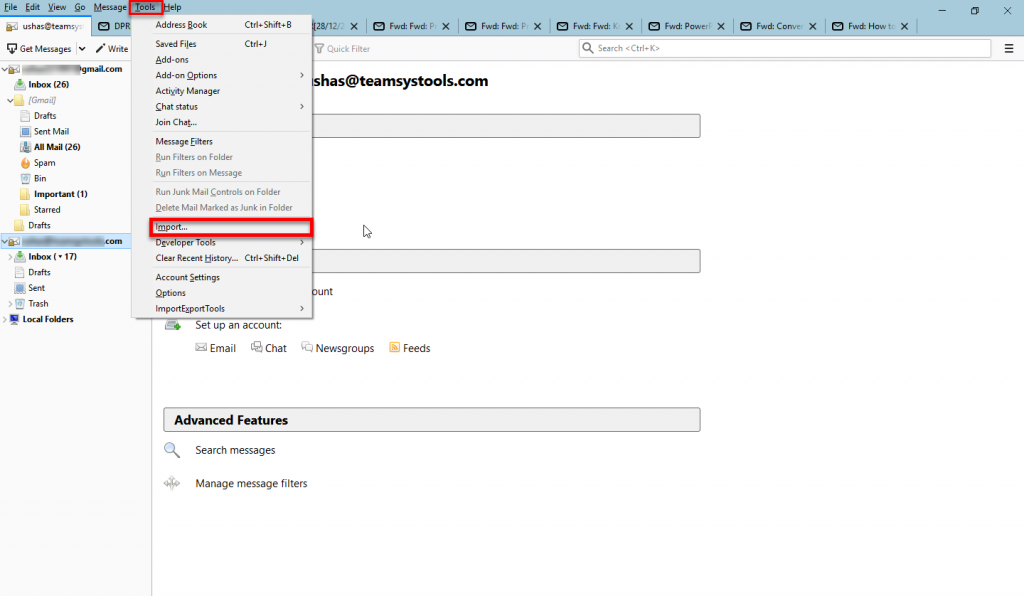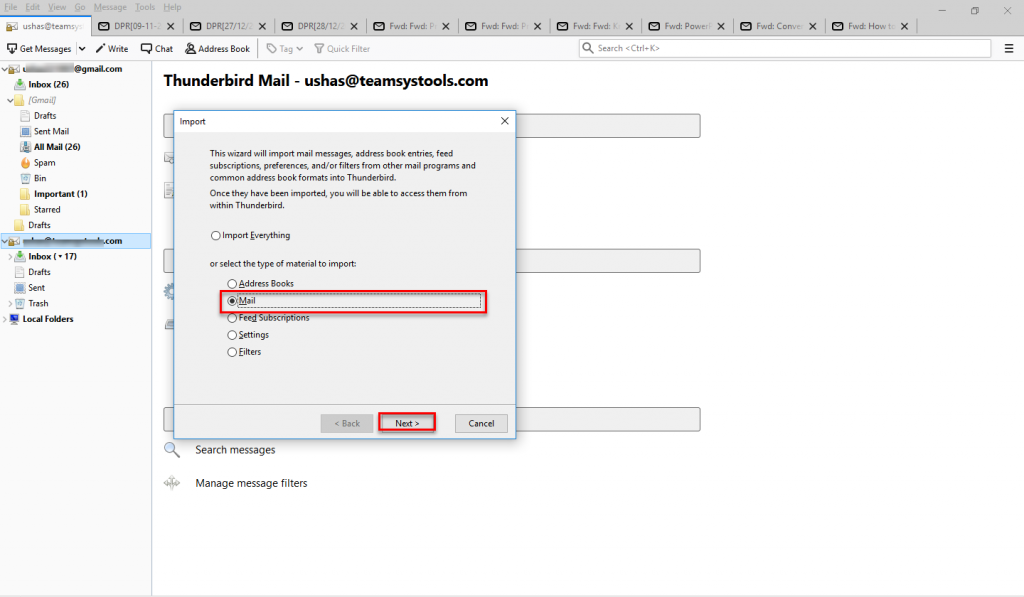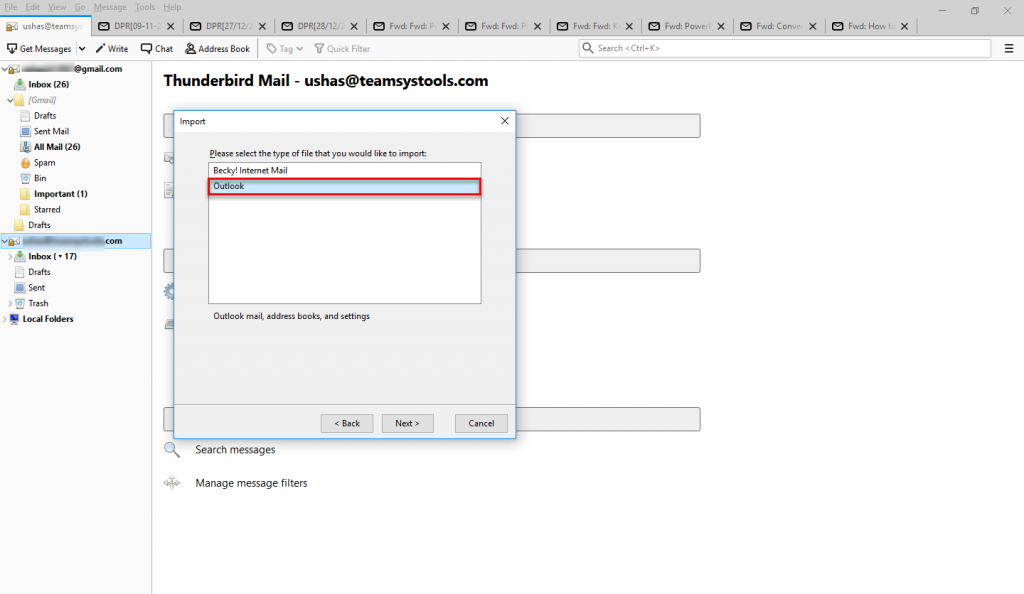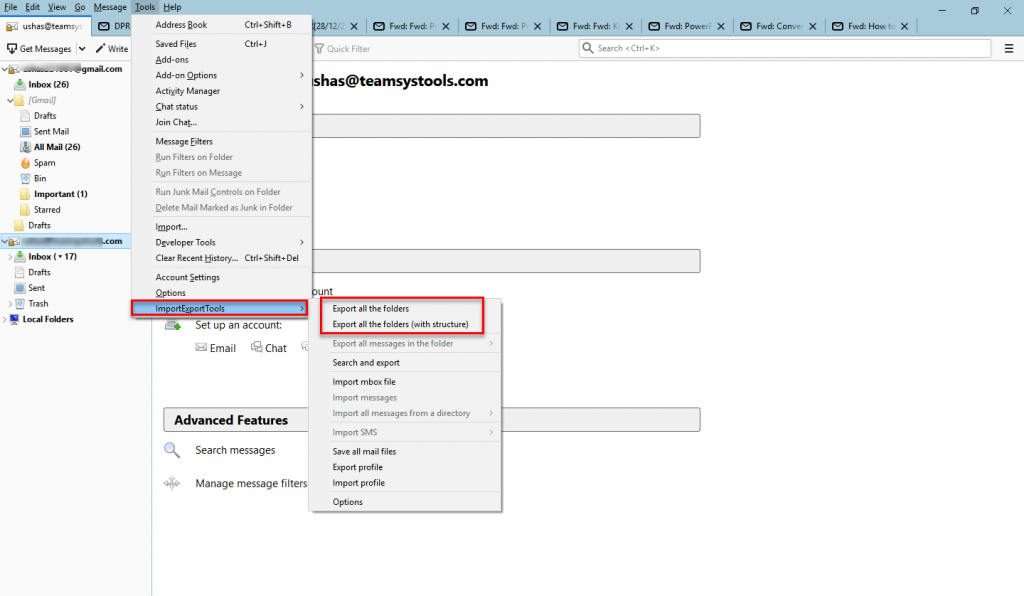How to Convert PST to MBOX – Best Practices
Process to convert PST to MBOX is a challenging Task if you are not aware of certain technicalities regarding the conversion. Here, in this how-to guide, we will explain how to convert outlook PST file to MBOX format for free using certain email clients. Fundamentally, PST and MBOX have different origins. Although both are considered mailbox formats that store emails, PST is capable of storing much more data like contacts, calendars, tasks, etc. In addition, PST is a mailbox format of Microsoft products like MS Outlook. While MBOX is a basic mailbox type used by popular email clients like Thunderbird, Apple Mail, etc. across all platforms.
Table of Contents
- Reasons for PST to MBOX Conversion
- Can We Customize MBOX File Names while converting to PST?
- How to Convert PST to MBOX with Email Clients – Method 1
- Export PST File to MBOX Using IMAP Account Method – Method 2
- Key Insight
- Observational Verdict
- FAQ ( Frequently Asked Questions)
Reasons for PST to MBOX Conversion
There are several reasons why someone would want to convert PST to MBOX file format. We have listed the popular ones below:
- Migrating from Outlook to Other Email Clients – When a user is working on MS Outlook on the Windows platform and wants to switch to other email clients like Thunderbird, Mac Mail, etc., it will require OST/PST to MBOX conversion.
- Open Orphan PST file in Current Email Client – If a user receives a PST file through any means (backup file, sent by colleagues, downloaded from the internet, etc.), and wants to open it in his/her MBOX-related email client, then the conversion is necessary.
- Cross-Platform Compatibility: One of the effective reasons to convert PST file to MBOX free is the cross-platform support which we get for MBOX files rather than Windows-based PST files. MBOX files get easily imported to email clients like Thunderbird on different operating systems like Windows, macOS and Linux, making them users preferred data backup sources.
Can We Customize MBOX File Names while Converting to PST?
- Yes it is possible to customize your files names when you convert PST to MBOX. you simply have to specify a folder for MBOX files, all converted messages will be saved to this folder. Also the messages from each Outlook mail folder will be saved to a separate MBOX format.
- Additionally, It allows you to flexibly configure the names of the resulting folders and MBOX files. you can also use macros in the targeted path for ex- message subject, sender and recipient names, sending and receiving dates, current date and time, Windows environment variables and many other.
- For advanced users, there are regular expressions provided to extract the necessary parts of the subject, message text, and other message fields for the target file and folder names.
Now let us move to our manual methods to know more about the conversion process:
How to Convert PST To MBOX with Email Clients – Method 1
Before executing this method, you must check if Microsoft Outlook is the default email client on your computer. For this, search “Default App Settings” in the search bar on your taskbar and set Outlook as the default app for Email. Then, do the following:
- Open Outlook and make sure the PST database is present in it. If not, import the PST file in Outlook.
- Now, quit Outlook and run the Mozilla Thunderbird email client.
- Click on the Tools menu (hit the Alt button if the menu bar is not visible).
- Select Import from the Tools menu.

- Choose Mail from the Import window and click the Next

- Then, select Outlook from the list of options given and click the Next

- A folder named “Outlook Import” will appear under Local Folders containing all the Outlook PST emails.
- Close the Import window.
Now, we have completed the process of exporting Outlook emails to Thunderbird. Now, we will work on generating the MBOX files containing these emails.
- First, install the ImportExportTools NG add-on in Thunderbird.

- After that, right-click on the Outlook Import folder and select ImportExportTools NG.
- Click on the Export folder with subfolders.
- Choose the location to save the file and click Select Folder
- Voila! All your PST emails are saved in MBOX files.
Export PST File to MBOX Using IMAP Account Method – Method 2
These are the brief steps to Convert PST to MBOX free using IMAP Account Method. This method uses the IMAP protocol to transfer emails from PST file to IMAP server. Making it accessible for export to MBOX file format using another email client. To get the clear solutions to this problem read the information given below:
- Configure IMAP Account: You have to Set up an IMAP email account in an email client such as Outlook or Thunderbird. Ensure that the email client supports both PST and MBOX formats.
- Import PST File: Now, Open the email client and import the PST file containing the emails you want to convert to MBOX format. This process may vary depending on the email client you are using. In Outlook, you can import a PST file through the “File” > “Open & Export” > “Import/Export” menu.
- Upload Emails to IMAP: Once the PST file is imported, drag and drop the emails from the PST folder to the corresponding folder in the IMAP account. This action will upload the emails from the PST file to the IMAP server.
- Access IMAP Account: Use another email client that supports exporting emails to MBOX format to access the IMAP account where the emails were uploaded.
- Export Emails to MBOX: In the email client, go to the folder where the emails are located within the IMAP account. Use the export feature to save the emails in MBOX format. This process may vary depending on the email client you are using. For example, taking Thunderbird you can right-click on the folder and select “Save as” to export emails to MBOX format.
- Verify Exported MBOX Files: Once the export process is complete, verify your emails that have been successfully saved in MBOX format or not. You can open the MBOX files using a compatible email client to ensure that the conversion of how to convert PST file to MBOX free was successful.
Key Insight to Convert PST File to MBOX
Mozilla Thunderbird and Microsoft Outlook are two important applications that must be installed for the manual method to work. You cannot convert PST to MBOX format without using another email client. It is only possible if you use a professional solution like the one we recommended you to go with a PST converter for the conversion process.
Observational Verdict
It is evident from the how-to guide that you know when you convert PST to MBOX Free format, using the above manual methods, such as using other email clients or using the IMAP account method. It offers flexibility and control to the conversion process when you export PST file to MBOX. These methods take care of different preferences and technical aspects. So, it allows users to choose the approach that best suits you according to their need.
FAQ (Frequently Asked Questions)
Q) How do I Convert PST to MBOX Free?
Yes you can export PST to MBOX Using Email Clients. Open an email client that supports both PST and MBOX formats ( for ex- Thunderbird) Manually drag and drop emails or folders from the PST file to MBOX Free format. Export the emails from the email client in MBOX format.
Q) Can we Import the PST file to Gmail?
Yes you can export by Entering your Gmail account email address and clicking on the Continue button. Click the “Allow” button to give the permission to migrate your PST file. Select the file with specific options to migrate and click Next. After that, set the migration settings as required and click Migrate button.


